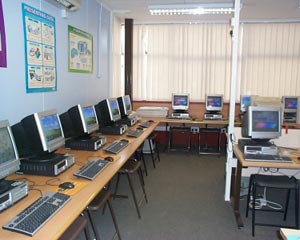
Imagine if everyone had a smartphone; our current woes for a copy of the draft constitution would not be of concern. The amount of money set aside for the production of the hard copy could have been bridged using technology.
By Vimbai Rupere
Our technology directorates/departments have not been given the prominence or importance they deserve in government. Keeping abreast with technology and international trends needs continuous improvement.
However, the cost has gone down tremendously in comparison to yesteryear. ICT departments need to work closely with the entire system of government and social and civic service provision.
With several years since internet access has been made available to users through the mobile phone, we are still under-utilising this technology.
In the same manner that a user/individual has a cellphone, one needs to have an email address.
No institution’s operations department should be rendered complete without solid ICT provision. The facilitation of technology access in rural areas alleviates the gap that exists between access to information with those living in well-served major cities and towns.
Even when the country is facing serious economic problems, mobile phone use remains consistent.
- Tarakinyu, Mhandu triumph at Victoria Falls marathon
- Plot to oust ED thickens
- Bread in short supply as bakeries demand US$
- Young vocalist making southern Africa dance
Keep Reading
The impediments in technology reach to the masses need to be tackled head on for the benefit of the people. Learning to use new technologies in rural communities does not impact heavily on cost.
Research shows that the willingness to learn new technology is automatic in an area hungry for inclusion. Service providers should also be urged by the regulators to simplify access to technology. In some cases, one has to go to unnecessary lengths to get a simple access point to configure their phone.
Customer services departments need to be well-equipped and well-supported in support information dissemination. More than 10 million emails and texts of varying sizes pass through operators per day. To be customer-focused and user service demand responsive, technical people are not the best to run customer services departments.
Customer services departments need to be led by revenue-focused personnel with a focus on the socio-economic environment in which we are operating.
Once an institution becomes aware of its customers’ needs — any services that can be delivered electronically — it is important for the revenue and customer-focused manager to take the customer’s case to the technical team.
In the midst of the hive of activity as dozens of people scramble to get access to a copy of the constitution, various constituencies could have been texting, emailing, Whatsapping, binuing several key aspects of the constitution to the communities.
User education must also continue, but this is the least of the challenges faced in making technology available for information dissemination.
Info sharing should be interactive
Monitoring of technologies and trends that transform society is easier managed by making information dissemination interactive, e.g. send text to short code to request, complete online form to request info, etc.
Any institution with a chief technical officer (CTO) or chief information officer (CIO) needs to seriously look at the provision of the electronic platform employed by its organisation to share information with target recipients.
World market trends indicate that sales of smartphones and tablets will surpass the 1 billion mark for the first time in 2013. Availability of an institution’s information to the target groups sense the platform for improved productivity which is demand driven and improved business agility.
There are new generation mobile network technologies that can support high-speed downloads that CIOs and CTOs need to be focusing on along with the Customer Services managers. In the past year, over 60 million mobile devices with the latest technologies such as LTE were shipped to clients. At this rate, it is not a mammoth task to surpass the projected 1 billion mark.
As a result of these latest technological advancements, developers worldwide are now focusing on online app stores to facilitate for customer/user demanded services. App stores include business applications that improve productivity and monitoring, customer relationship management, enterprise resource management. In other countries government app stores have been developed.
Mobile Devices + Broadband Networks + Business Apps are commonplace and seen as high value solutions. They have high revenue potential attached to them. Over the years, strides have been made in communication and collaboration in the office — but not the mobile.
CIO technology priorities need to include secure, mobile solutions, with a focus on team collaboration, running in the cloud, replacing legacy systems. The mobile workforce is changing and are being asked to do much more than ever before. The costs of the lack of information and communication and information sharing can be monumental.
Mobile communications (both voice and broadband) make it possible for teams of people, whether mobile or those stationed in offices, to effectively communicate and collaborate through voice, text and data — securely, reliably and in real-time — regardless of network, carrier, protocol or device, whether deployed on-premise or in the cloud.
Communications designed for the home user should focus on communications interoperability platform optimised for integrating and transporting real-time voice, video, text and other vital business information securely over any network with connectivity for both voice and data to telephony and other legacy and modern communication systems.
Desktop and web communication applications that unify communications among teams of workers, whether in their office or mobile include applications that are role specific can be used stand-alone or integrated seamlessly into other popular communication and collaboration platforms.
Integration of communication and collaboration systems directly into new and existing line of business applications provides users with business processes which fully integrate with their individual and team communications.










